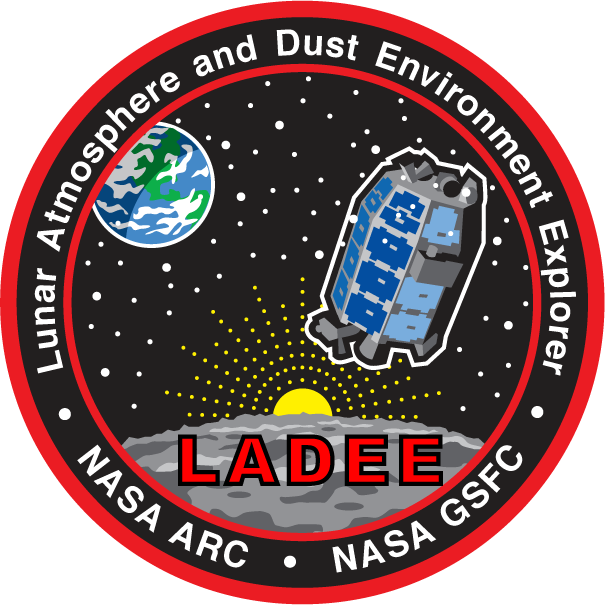
Overview
NASA's Lunar Atmosphere and Dust Environment Explorer (LADEE) is a robotic mission that will orbit the moon to gather detailed information about the lunar atmosphere, conditions near the surface and environmental influences on lunar dust. A thorough understanding of these characteristics will address long-standing unknowns, and help scientists understand other planetary bodies as well. The LADEE spacecraft's modular common spacecraft bus, or body, is an innovative way of transitioning away from custom designs and toward multi-use designs and assembly-line production, which could drastically reduce the cost of spacecraft development, just as the Ford Model T did for automobiles.
Science Goals
The LADEE spacecraft and instrument package is designed to:
Goal 1: Determine the global density, composition, and time variability of the lunar atmosphere - examining the fragile atmosphere before it is further perturbed by future human activities.
Goal 2: Compare to other planetary bodies with exospheres - studying the Moon's exosphere will help understand other planetary bodies, such as Mercury or Jupiter's larger moons.
Goal 3: Characterize the history of the atmosphere - understanding the interaction between the solar wind, lunar surface and interior, and meteoric infall as sources of atmospheric species.
Goal 4: Test new technologies - including a modular spacecraft bus that may reduce costs for future deep space missions, and the demonstration of a two-way high rate laser communication system for the first time on the Moon.
Scientific Objectives
Objective 1: Determine the composition of the lunar atmosphere and the processes that control its distribution and variability.
Objective 2: Characterize the lunar exospheric dust environment.
Scientific Measurement
Onboard, LADEE will include three science instruments and a technology demonstration.
Ultraviolet and Visible Light Spectrometer (UVS): will determine the composition of the lunar atmosphere by analyzing light signatures of materials it finds.
Neutral Mass Spectrometer (NMS): will measure variations in the lunar atmosphere over multiple lunar orbits with the moon in different space environments.
Lunar Dust Experiment (LDEX): will collect and analyze samples of any lunar dust particles in the tenuous atmosphere. These measurements will help scientists address a mystery: was lunar dust, electrically charged by solar ultraviolet light, responsible for pre-sunrise horizon glow that Apollo astronauts saw?
Lunar Laser Communications Demonstration: will demonstrate the use of lasers instead of radio waves to achieve broadband speeds of 622Mb/s (compared to current methods that achieve ~100 Mb/s) to communicate with Earth.
 PDS: The Planetary Atmospheres Node
PDS: The Planetary Atmospheres Node

